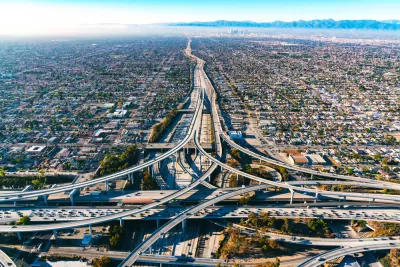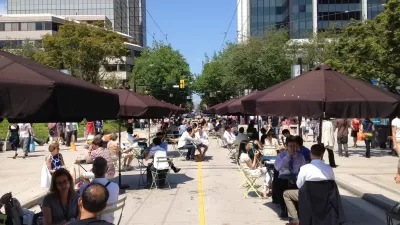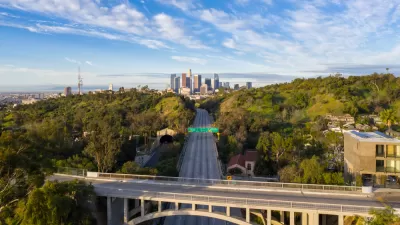The United Nations International Panel on Climate Change (IPCC) released its latest report earlier this week, sounding the alarm that time is running out to make the changes that can prevent the worst outcomes of climate change.

According to the IPCC Working Group III report, "Climate Change 2022: Mitigation of climate change," the world can still halve greenhouse gas emissions by 2030 to limit global warming to 1.5 degrees Celsius. From 2010-2019, average annual global greenhouse gas emissions were at the highest levels in human history, according to a press release announcing the report, but the rate of growth has slowed and there is increasing evidence of climate action.
An article for the Washington Post by Sarah Kaplan and Brady Dennis summarize six of the biggest climate action recommendation of the report—in all the report includes hundreds of ideas for greenhouse gas emission reductions. One of the big ideas explored in the article—turning cities clean and green—is directly connected to the field of planning.
"Simple urban planning measures, such as increasing density, mixing residential and commercial areas so people can live where they work, and developing along public transit corridors, could cut urban carbon pollution by roughly a quarter by 2050," according to the article.
There is more detail about how to transform cities for a low-carbon future in the source article below, as well as the other five steps to halt climate change listed here: 1) Switch on renewable energy, 2) Make buildings more efficient, 3) Rev up electric vehicles—and walk or bike the rest of the way, 4) Sink carbon into the land, and 5) Invest in a fairer world.
FULL STORY: Six steps the world can take to halt climate change

Trump Administration Could Effectively End Housing Voucher Program
Federal officials are eyeing major cuts to the Section 8 program that helps millions of low-income households pay rent.

Planetizen Federal Action Tracker
A weekly monitor of how Trump’s orders and actions are impacting planners and planning in America.

Ken Jennings Launches Transit Web Series
The Jeopardy champ wants you to ride public transit.

California Invests Additional $5M in Electric School Buses
The state wants to electrify all of its school bus fleets by 2035.

Austin Launches $2M Homelessness Prevention Fund
A new grant program from the city’s Homeless Strategy Office will fund rental assistance and supportive services.

Alabama School Forestry Initiative Brings Trees to Schoolyards
Trees can improve physical and mental health for students and commnity members.
Urban Design for Planners 1: Software Tools
This six-course series explores essential urban design concepts using open source software and equips planners with the tools they need to participate fully in the urban design process.
Planning for Universal Design
Learn the tools for implementing Universal Design in planning regulations.
Ada County Highway District
Clanton & Associates, Inc.
Jessamine County Fiscal Court
Institute for Housing and Urban Development Studies (IHS)
City of Grandview
Harvard GSD Executive Education
Toledo-Lucas County Plan Commissions
Salt Lake City
NYU Wagner Graduate School of Public Service





























